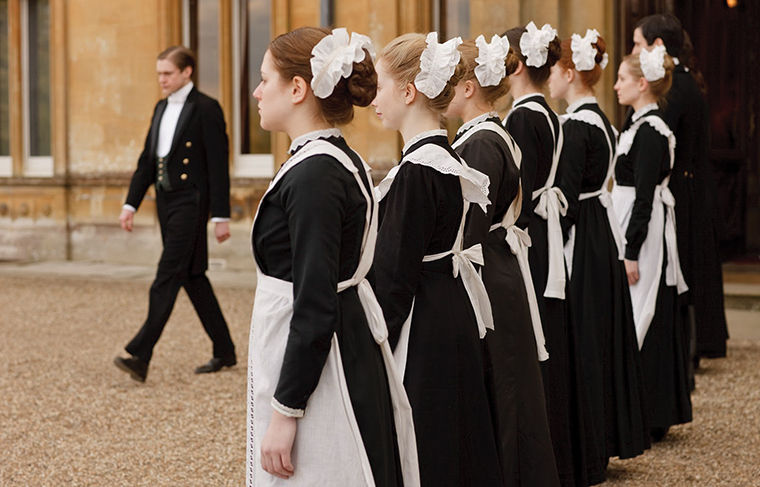Museum to take a trip ‘Downton’
Courtesy CARNIVAL FILMS/MASTERPIECE
Geoffrey Curley from Geoffrey M. Curley + Associates, the company that helped put “Dressing Downton: Changing Fashion for Changing Times” together, said the costumes in “Downton Abbey” range from Victorian era to flapper style.
January 25, 2016
Chicagoans can take a trip back in time into the world of ITV and PBS’ popular show “Downton Abbey” through the traveling exhibit “Dressing Downton: Changing Fashion for Changing Times.”
The exhibit is scheduled to visit The Richard H. Driehaus Museum, 40 E. Erie St., from Feb. 9 to May 8 in honor of the show’s final season.
The exhibit features 36 Creative Arts Emmy Award-winning costumes from the show displayed at the Driehaus Museum, according to Lindsay Silk-Kremenak, the museum’s marketing manager.
“Seeing these costumes in a room where people lived and is still set up [for the era] is really special,” Silk-Kremenak said.
The costumes were created by London-based costume company Cosprop ltd. Cosprop uses original fabrics from the early 20th century in an effort to represent the time period accurately, she added.
“You can come here and if you’re a fan of fashion, see something you know will be as historically accurate as possible,” Silk-Kremenak said.
The traveling exhibit was organized by Exhibits Development Group, which started planning “Dressing Downton” in late 2010 to early 2011, according to Amy Noble Seitz, CEO of EDG.
“‘Downton Abbey’ had just come out with their first season, and we were all a bit enamored by the success of the program, Noble Seitz said. “We began developing an exhibition surrounding the most important part of that show: fashion.”
Geoffrey Curley said he and his company, Geoffrey M. Curley + Associates, were hired to work on most of the design and storyline of the exhibition.
“We had to make sure the exhibition was tied into not just the television show, but also the paradigm shifts that were happening at that point in time,” Curley said. “The exciting thing about ‘Downton Abbey’ is that it spanned over the first World War, and when that happened, it turned that whole society on its head and that’s reflected in the dress at the time.”
Marianna Beck, an adjunct professor in the Fashion Studies Department, said shows with accurate historical dress can transport viewers back in time through the detail of the costumes.
“There’s a great deal of devotion to not only historical recreation, but also to the silhouette of the body, which changed from the beginning of the 20th century when the ideal female image was a feminine hourglass shape into a much more linear look,” Beck said. “You can see that is certainly happening in [‘Downton Abbey’].”
The older women tend on the series to stick with the fashion expected in the beginning of the 20th century while younger women dress in the newer fashion that was evolving, Beck said. She added that it is important for costume designers to study the time period and the fabrics and textiles used.
“You wouldn’t be introducing something polyester in 1914,” Beck said.
According to the museum’s website, the costumes featured in “Dressing Downton” from the show include garments from “country tweeds to footmen’s livery, lavish evening attire and daring Bohemian fashions.”
Along with the exhibit of costumes, the Driehaus Museum will also have a set of historical photographs in an exhibit titled “Faces and Fortunes: Chicago Fashion 1910–1921.”
“[The photography exhibit] will have 15 photographs highlighting clothing worn by Chicago aristocrats during the same time period that ‘Downton Abbey’ is set,” Silk-Kremenak said.
Silk-Kremenak said museum goers can also attend a traditional British teas, offered three times a day, which require a separate ticket.
“If you’re already going to be around, and you want to have a warm, inviting atmosphere, [the catered tea] will be English garden-inspired,” Silk-Kremenak said.
The exhibit will be at the Driehaus Museum Feb. 9 through May 8. Tickets are sold for timed slots at DriehausMuseum.org.








